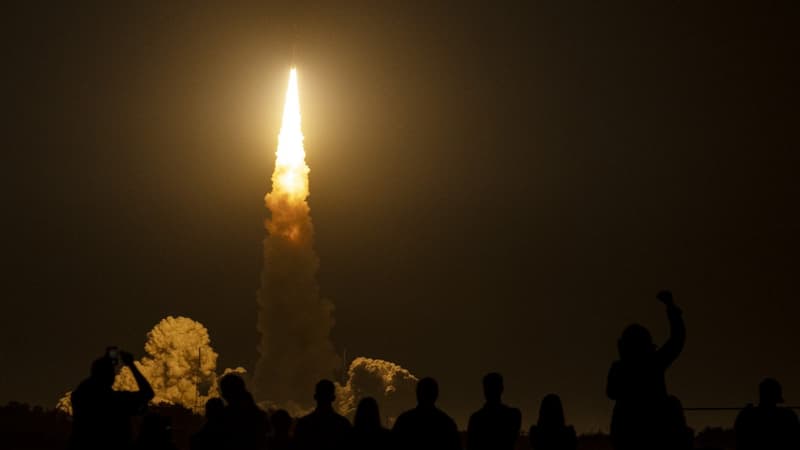With a deafening noise, NASA’s new megarocket, the most powerful in the world, blasted off from Florida on Wednesday for the Moon, for the first unmanned mission of NASA’s new flagship program, Artemis.
The rocket, named SLS, rose into the night as a gigantic ball of fire at 1:47 a.m. local time (7:47 a.m. in France), from the Kennedy Space Center.
So the third launch attempt will have been the right one, after two tests canceled at the last minute this summer due to technical problems, and then two hurricanes that delayed liftoff for several weeks.
A 25-day unmanned mission
The Artemis 1 mission should take 25 days in total, and many stages could still pose problems, but the first liftoff of this 98-meter-tall behemoth, in development for more than a decade, already represents a real success for NASA.
Fifty years after the last Apollo mission, this test flight, which will circumnavigate the Moon without landing there and without an astronaut on board, should confirm that the vehicle is safe for a future crew.
It marks the great beginning of the Artemis program, which aims to send the first woman and the first person of color to the Moon. The goal is to establish a lasting human presence there, in preparation for a trip to Mars.
“A lot of sweat and tears went into that rocket,” NASA chief Bill Nelson said Tuesday. “It will keep us going back and forth to the Moon and beyond for decades to come.”
A hydrogen leak compromised takeoff
Despite a late-night launch on Wednesday, some 100,000 people were expected to admire the spectacle, especially from the surrounding beaches.
As with two previous failed launch attempts this summer, filling the rocket with its cryogenic fuel, more than 2.7 million liters of liquid hydrogen and oxygen, gave it a hard time.
An ultra-flammable hydrogen leak was detected in the afternoon at the feet of the rocket, and required a team of technicians to be sent to the launch pad to repair it, halting preparations for approximately an hour and causing a slight delay in the flight. . the initial takeoff time.
This summer, the first takeoff attempt was canceled at the last minute due to a faulty sensor, and the second due to a hydrogen leak. Following these technical problems, two hurricanes, Ian and then Nicole, successively threatened the rocket, delaying liftoff for several weeks.
The Orion capsule will reach the Moon in a few days
Right after takeoff, crews at the control center in Houston, Texas took over.
Within two minutes, the two white reinforcements fell back towards the Atlantic. After eight minutes, the main stage in turn was separated. Then, around 1h30 after liftoff, a final push from the upper stage will put the Orion capsule on its way to the Moon, where it will arrive in a few days.
There, it will be placed in a distant orbit for about a week and will venture up to 40,000 miles behind the Moon, a record for a habitable capsule.
Finally, Orion will begin its return to Earth, testing its heat shield, the largest ever built. It will have to endure a temperature half as hot as the surface of the Sun as it passes through the atmosphere. Landing in the Pacific Ocean is scheduled for December 11.
Astronauts on the Moon in 2025?
After the Saturn V rocket of the Apollo missions, then the space shuttles, SLS must lead NASA into a new era of human exploration, this time from deep space.
In 2024, Artémis 2 must carry astronauts to the Moon, without even landing there. An honor reserved for the Artemis 3 crew, in 2025 at the earliest.
NASA then plans one mission per year to build a space station in orbit around the Moon and a base at its south pole. The goal is to test new equipment there: suits, vehicles, mini power plants, use of ice water on site… All to establish a lasting human presence there.
This experiment should prepare for a manned flight to Mars, perhaps in the late 2030s. This journey, on a completely different scale, would take at least two years round-trip.
Source: BFM TV


